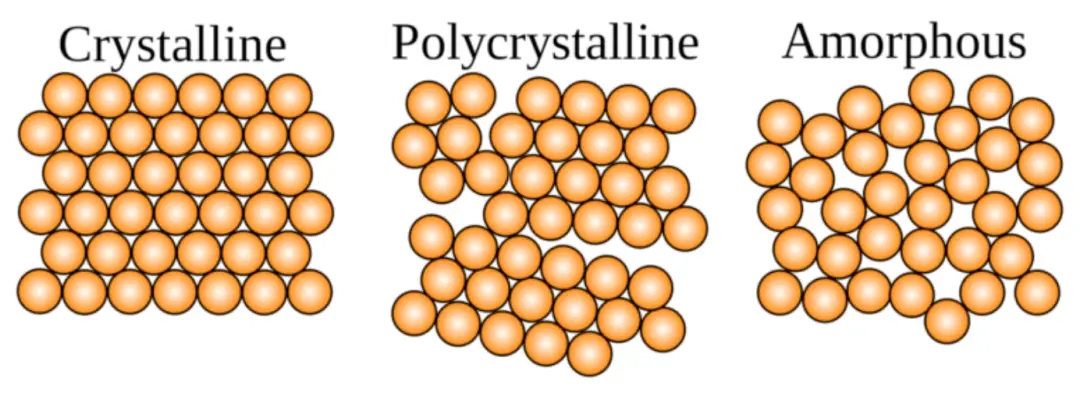Introduction:
In the field of nanotechnology, three types of nanomaterials, namely single crystal, polycrystalline, and amorphous nanomaterials, are commonly used. These materials have different structures, properties, and applications in various fields. In this article, we will provide an overview of these three types of nanomaterials, their characteristics, and applications.
Single crystal nanomaterials:
Single crystal nanomaterials are those nanomaterials in which the atoms are arranged in a highly ordered and repetitive manner in a single crystal lattice. These materials exhibit unique electronic, optical, and mechanical properties due to their high structural and chemical homogeneity. Single crystal nanomaterials find applications in various fields such as electronics, photonics, and catalysis.
Polycrystalline nanomaterials:
Polycrystalline nanomaterials are those nanomaterials which consist of multiple small crystallites having different orientations with respect to each other, leading to the formation of grain boundaries. These materials exhibit improved mechanical strength and higher resistance to deformation compared to single crystal nanomaterials. Polycrystalline nanomaterials can be synthesized by various methods such as ball milling and sintering. They find applications in fields such as energy storage, gas sensing, and photocatalysis.
Amorphous nanomaterials:
Amorphous nanomaterials are those nanomaterials in which the atoms are arranged in a non-repetitive, random manner. These materials exhibit unique structural, optical, and magnetic properties due to their disordered nature. Amorphous nanomaterials can be synthesized by various methods such as sol-gel, thermal evaporation, and laser ablation. They find applications in fields such as medicine, optics, and energy storage.
In this article, we will cover the main differences between single crystals and polycrystals.

Crystal Structure
The most significant difference between single crystals and polycrystals lies in their crystal structure. Single crystals have an ordered, continuous, and complete arrangement of atoms or molecules, without any grain or boundary. On the other hand, polycrystals are made up of multiple grain structures, and the grains are connected through grain boundaries. These grain boundaries typically have a disordered arrangement of atoms or molecules compared to the rest of the crystal. As a result, single crystals have a higher degree of crystallization and integrity compared to polycrystals.
Physical Properties
The physical properties of single crystals and polycrystals differ due to their crystal structure. Single crystals have a uniform arrangement of atoms or molecules, which makes them more isotropic and homogeneous in terms of the physical properties. Thus, single crystals exhibit excellent properties in various areas such as electrical, optical, thermal, and mechanical. On the other hand, polycrystals have varying grain structures and properties due to the presence of grain boundaries, making them less isotropic and heterogeneous. As a result, polycrystals exhibit lower overall physical properties than single crystals.
Preparation Methods
The preparation methods for single crystals and polycrystals also differ. Single crystals are typically prepared using controlled and sophisticated techniques such as suspension, vapor deposition, and floating zone methods. In contrast, polycrystals can be made using relatively simple methods such as melting or solidification. The preparation method of single crystals requires high precision and control due to their ordered and continuous structure.
Applications
Due to the unique properties of single crystals, they have a wide range of applications in various fields. Single crystals are extensively used in semiconductor manufacturing for making integrated circuit chips, thanks to their high crystallinity and purity. Single crystals are also used in the production of high-precision optical lenses, laser devices, and other optical components due to their superior optical properties. On the other hand, polycrystals are widely used in mechanical applications as they offer superior ductility and toughness.
Conclusion:
In summary, single crystal, polycrystalline, and amorphous nanomaterials have different structures, properties, and applications in various fields. SAT NANO offers high-quality nanometals, metal oxides, and metal carbides, which are commonly used for the synthesis of these nanomaterials. By choosing the appropriate nanomaterial, researchers can tailor the properties of the material to meet the requirements of their specific applications.


























